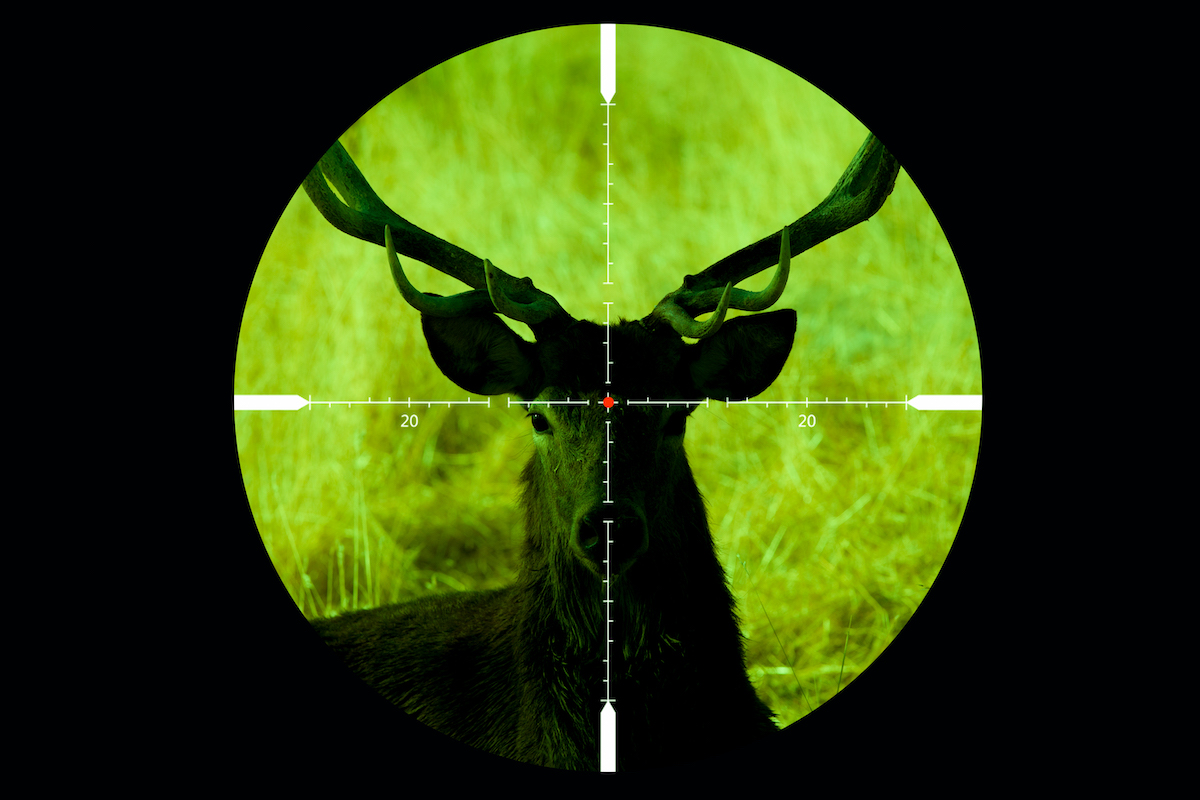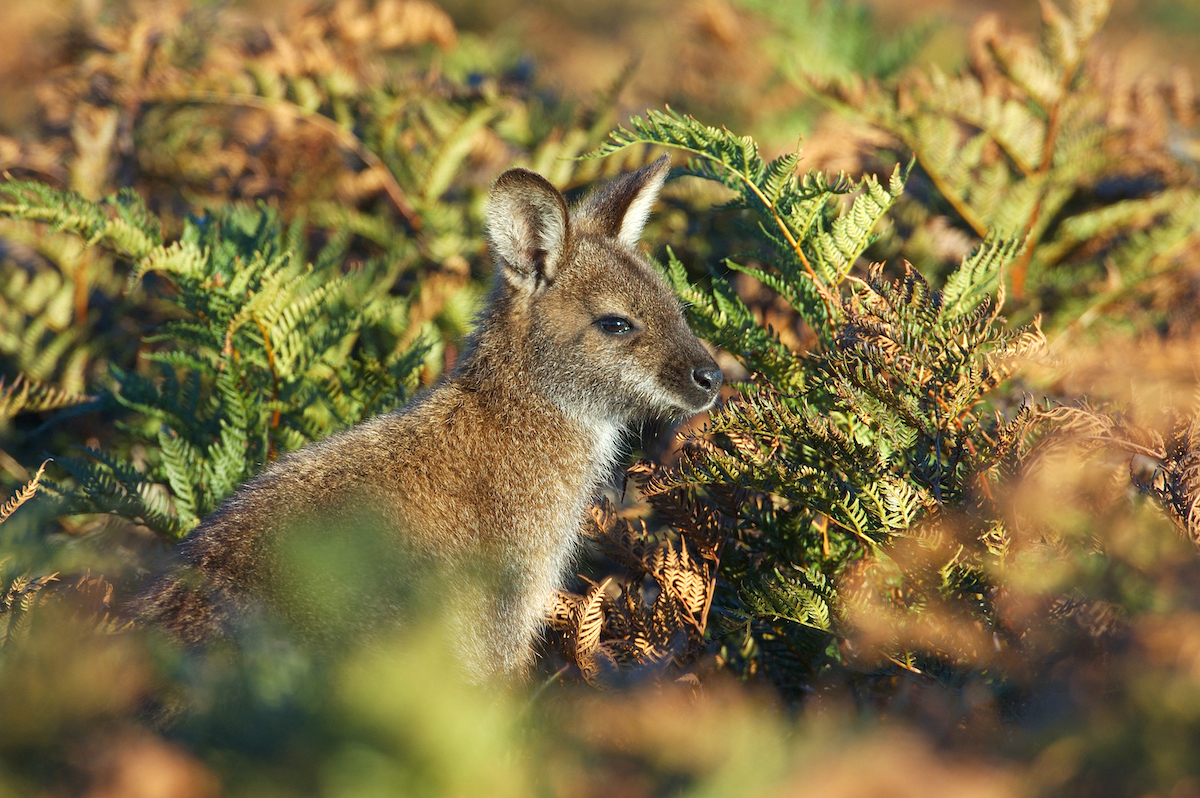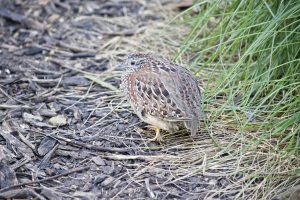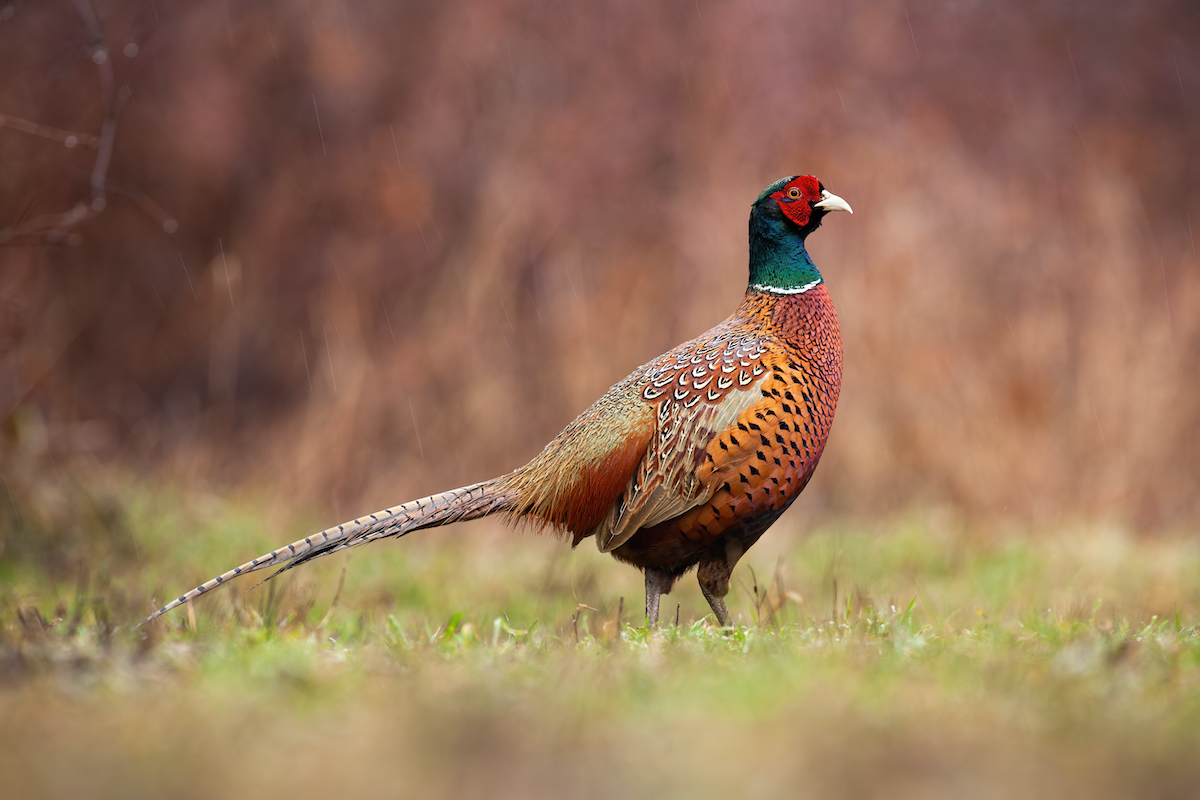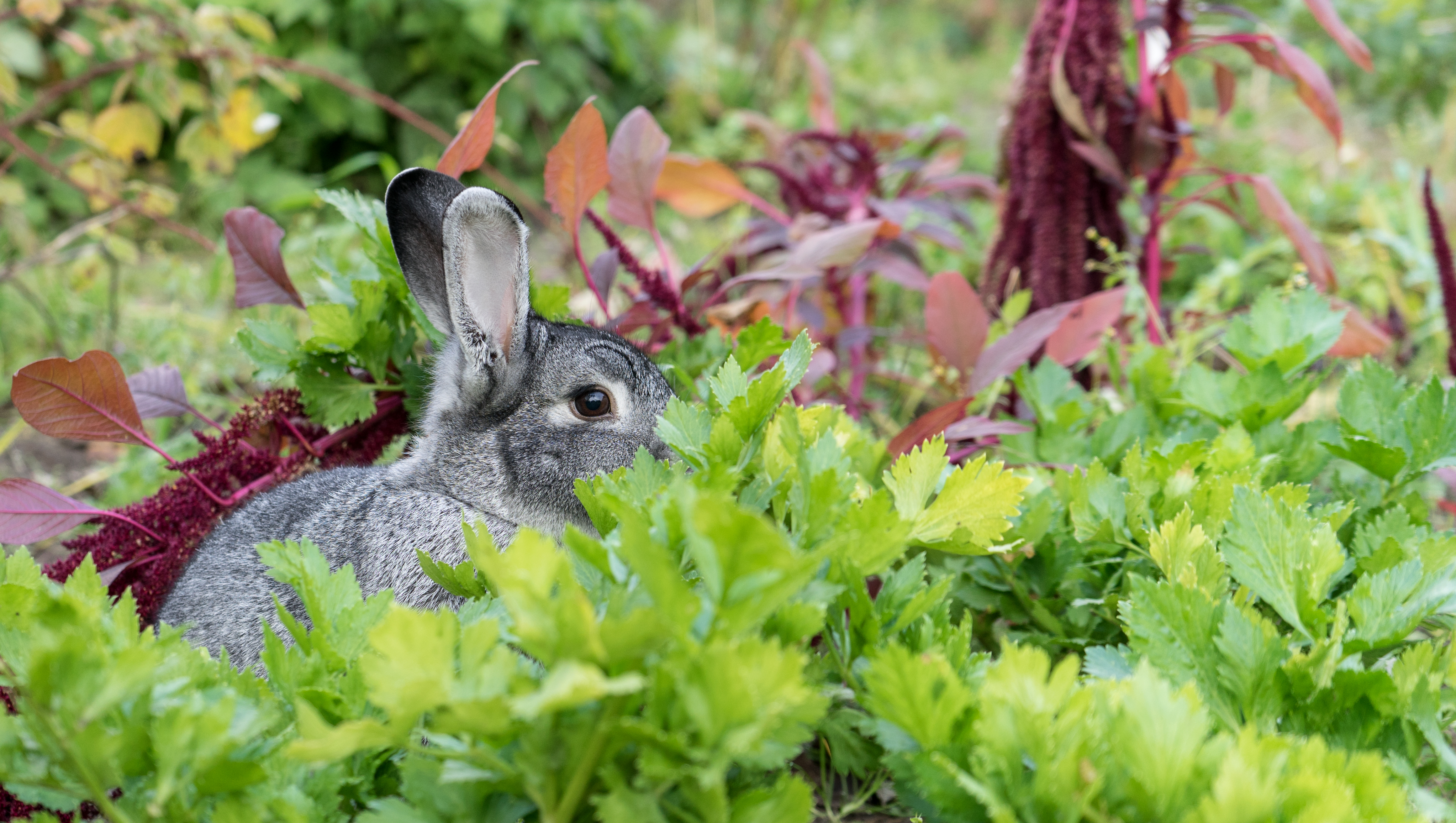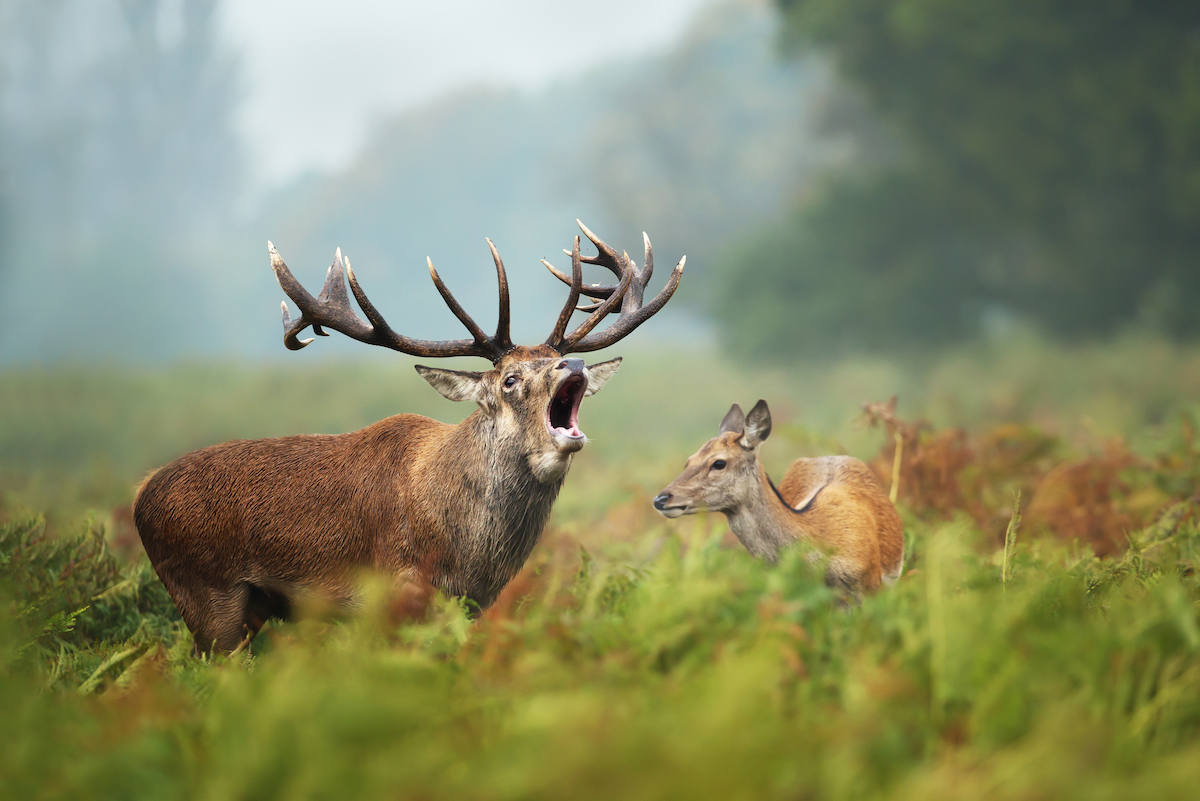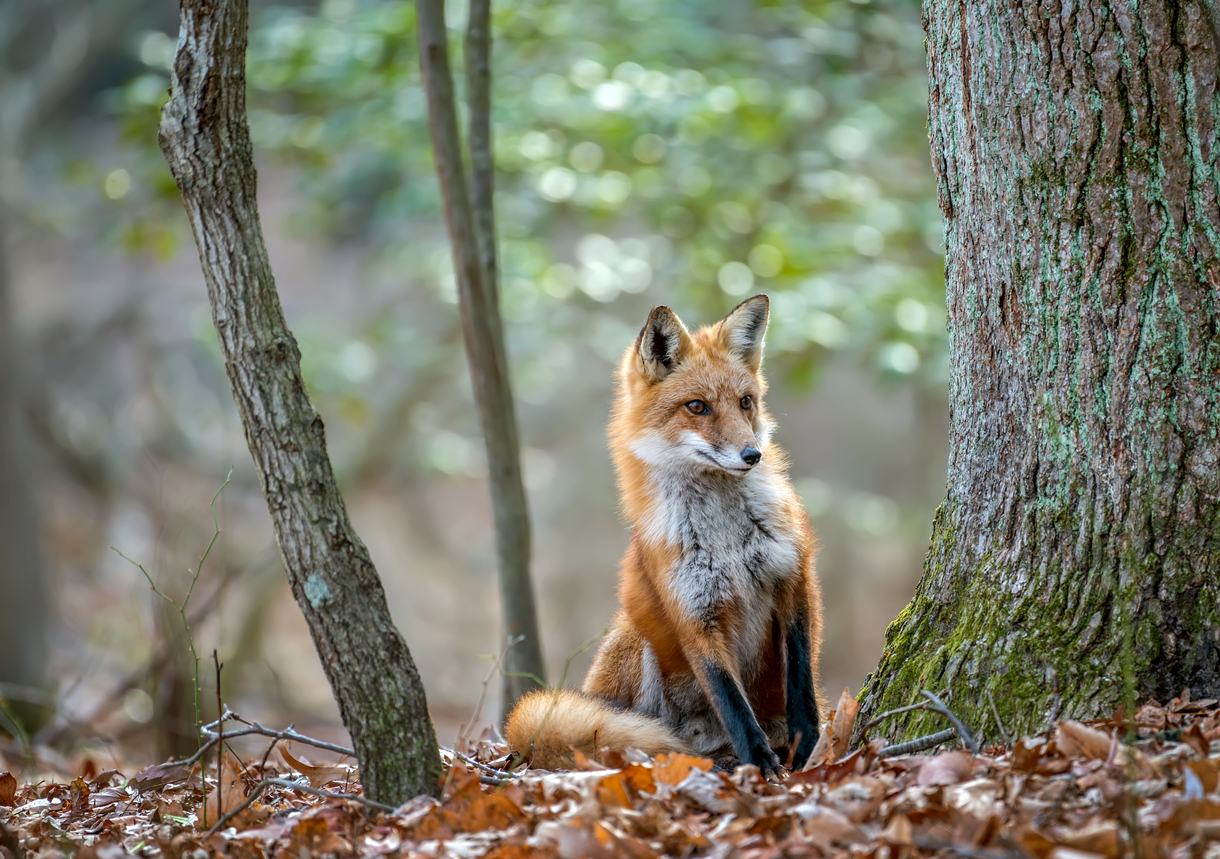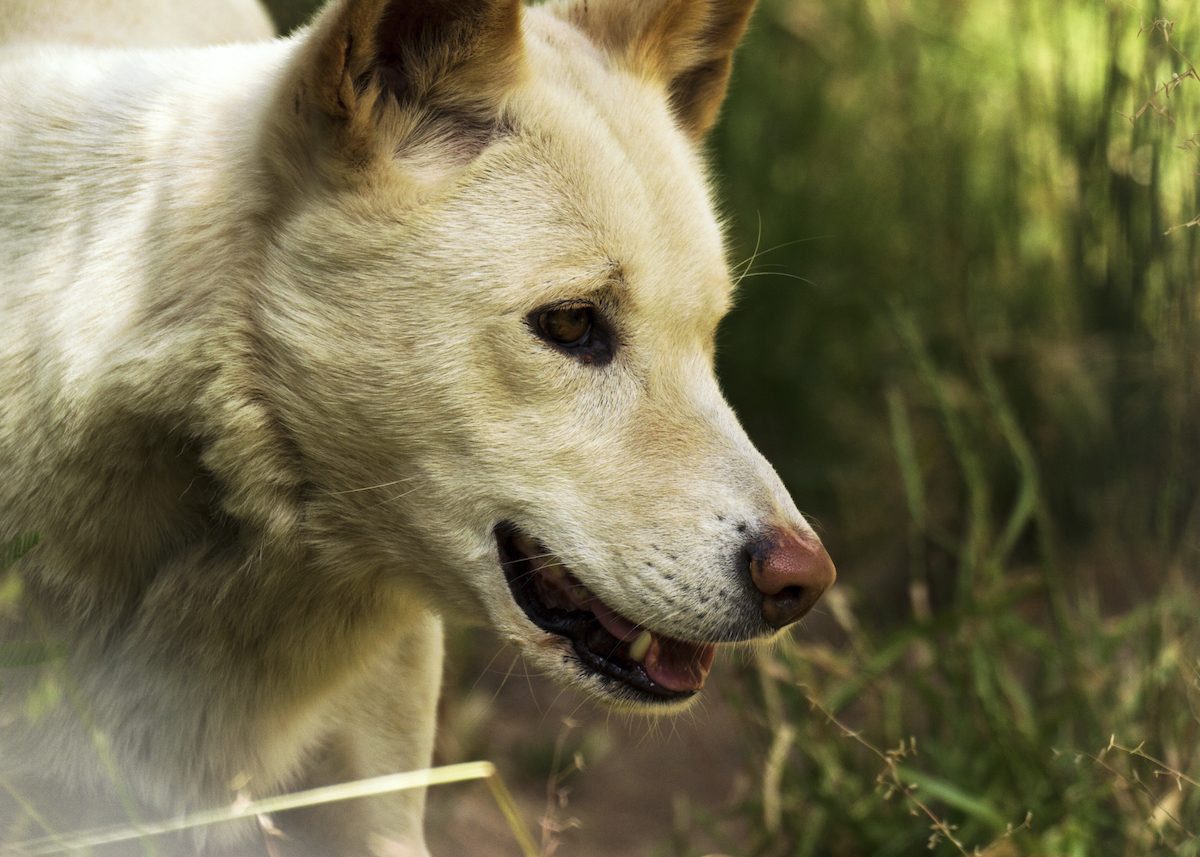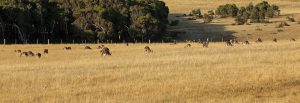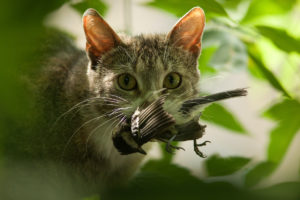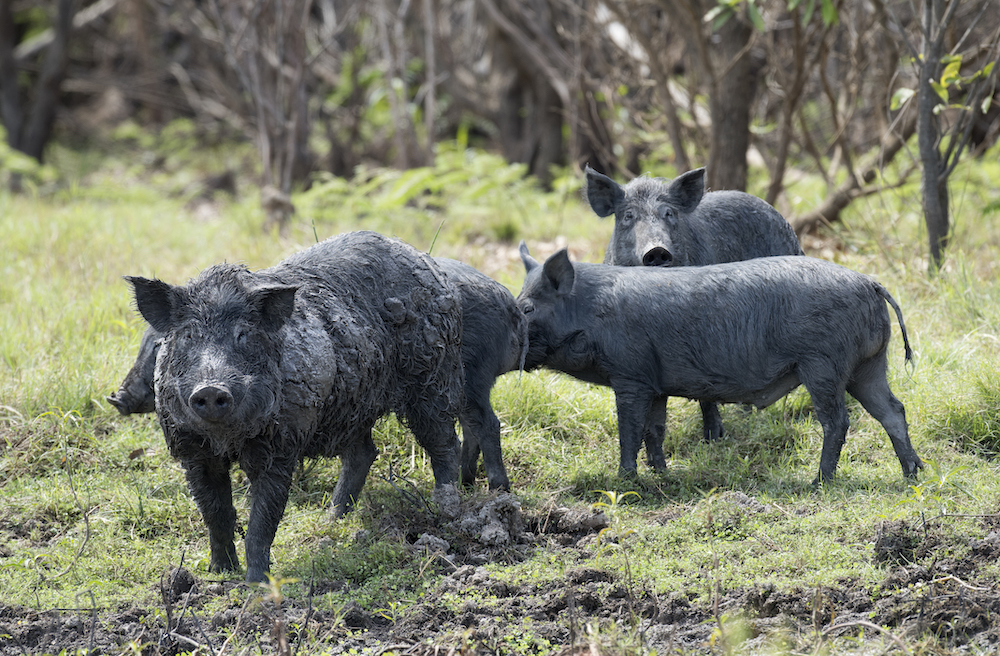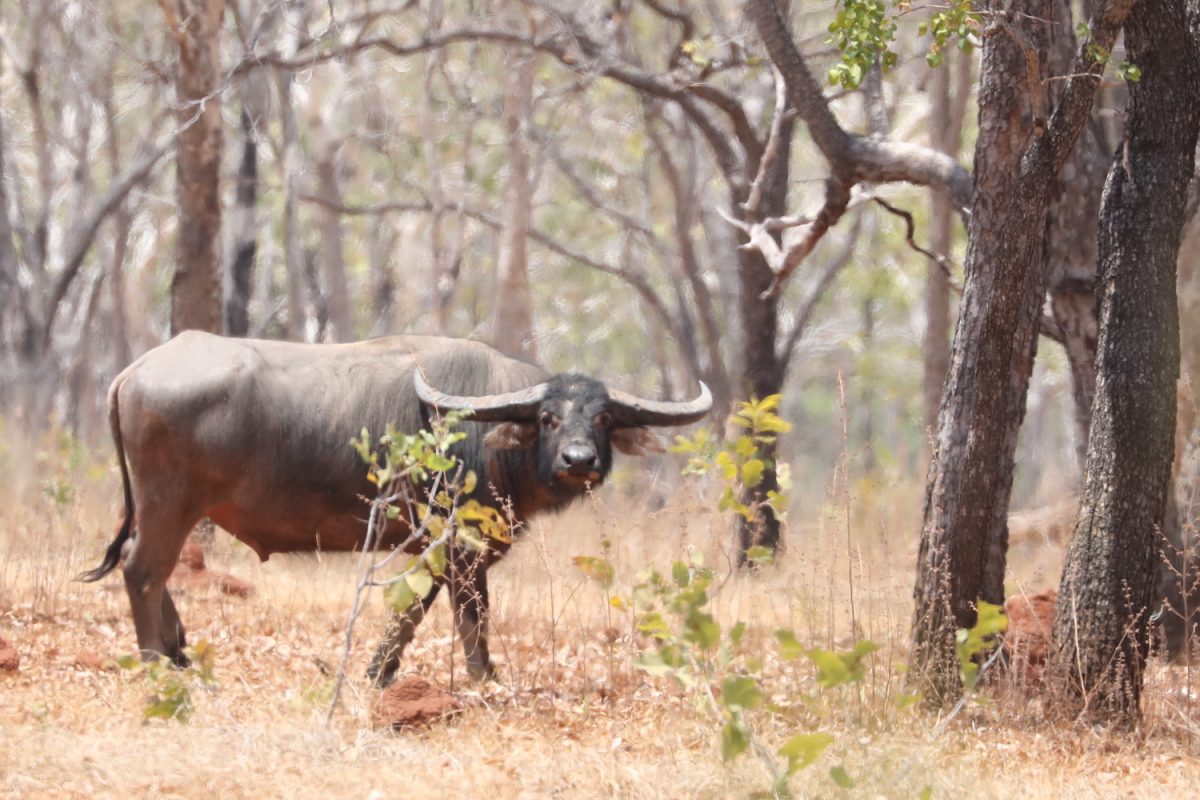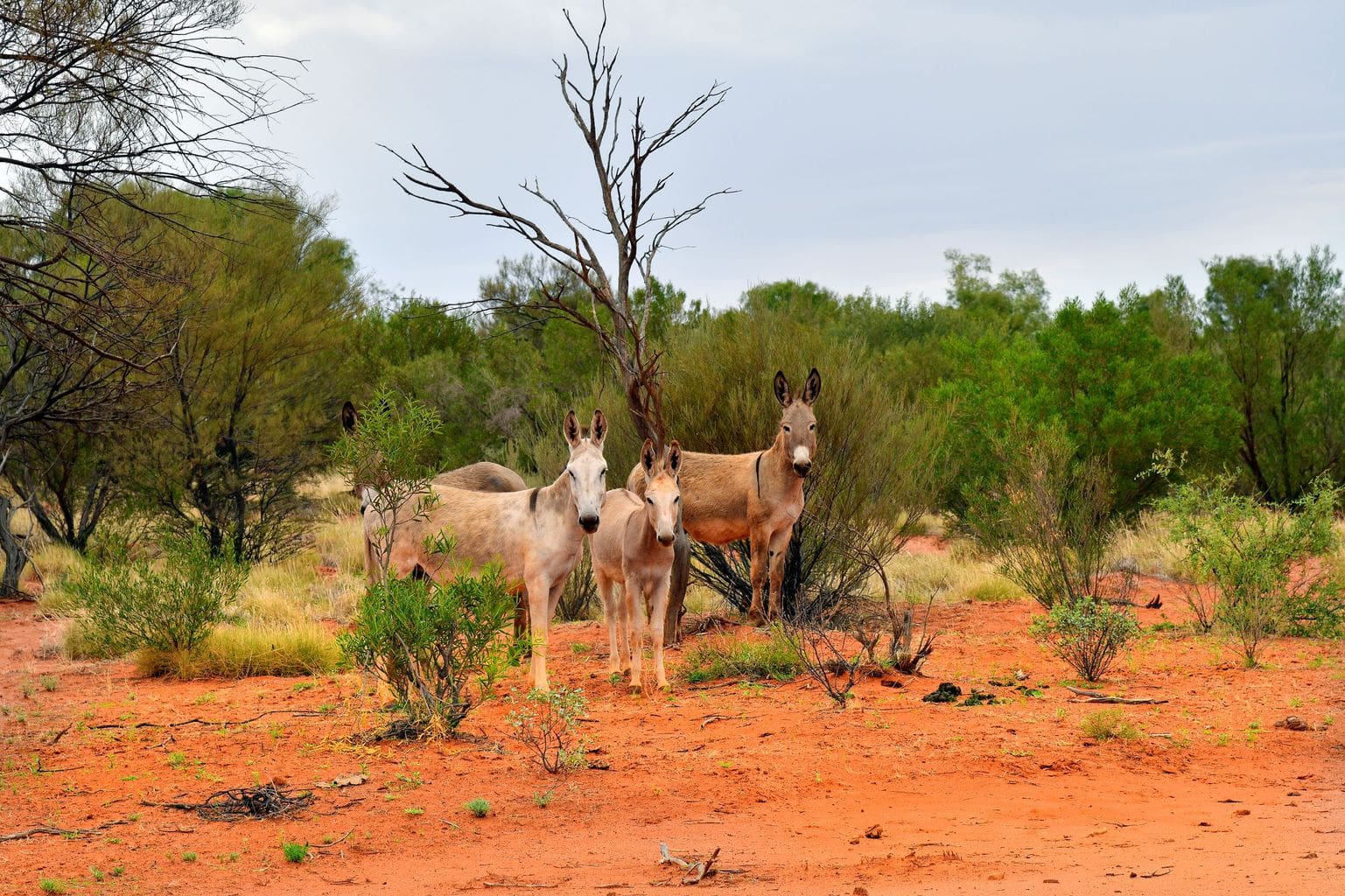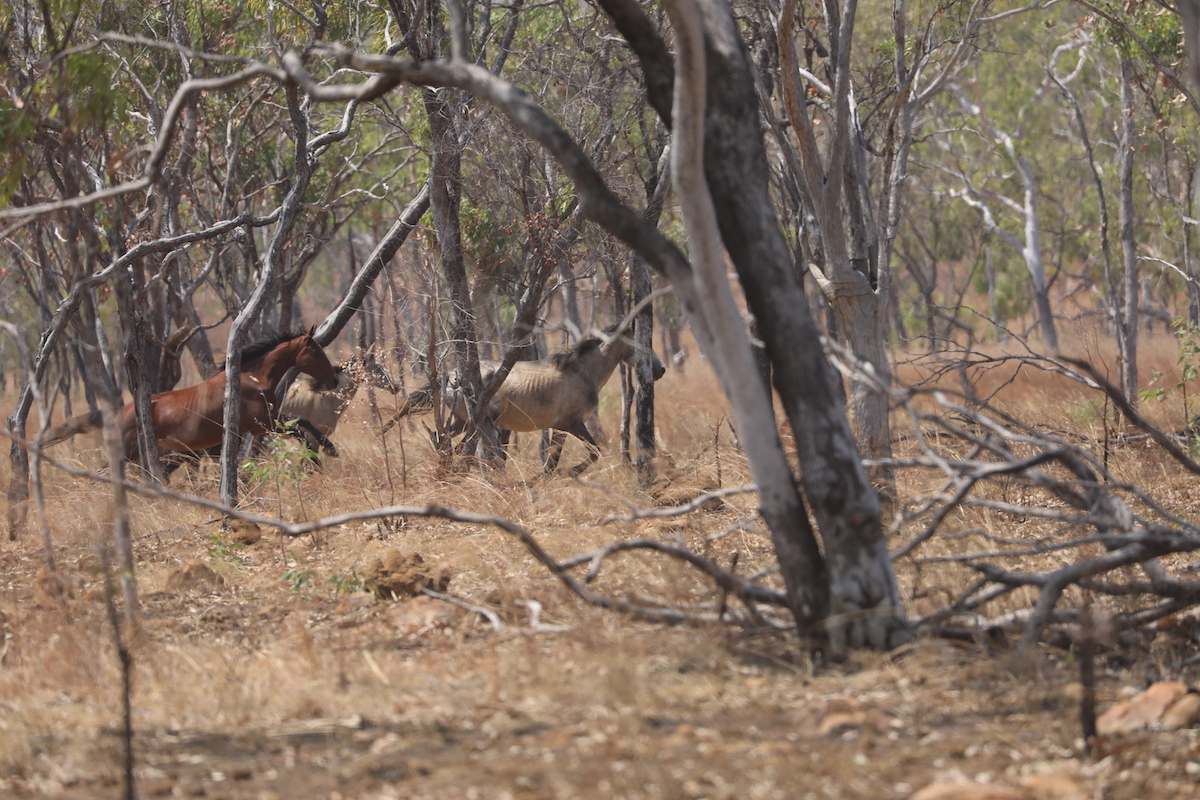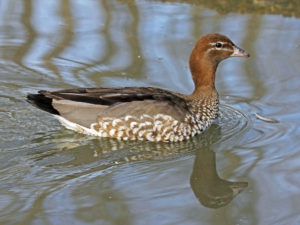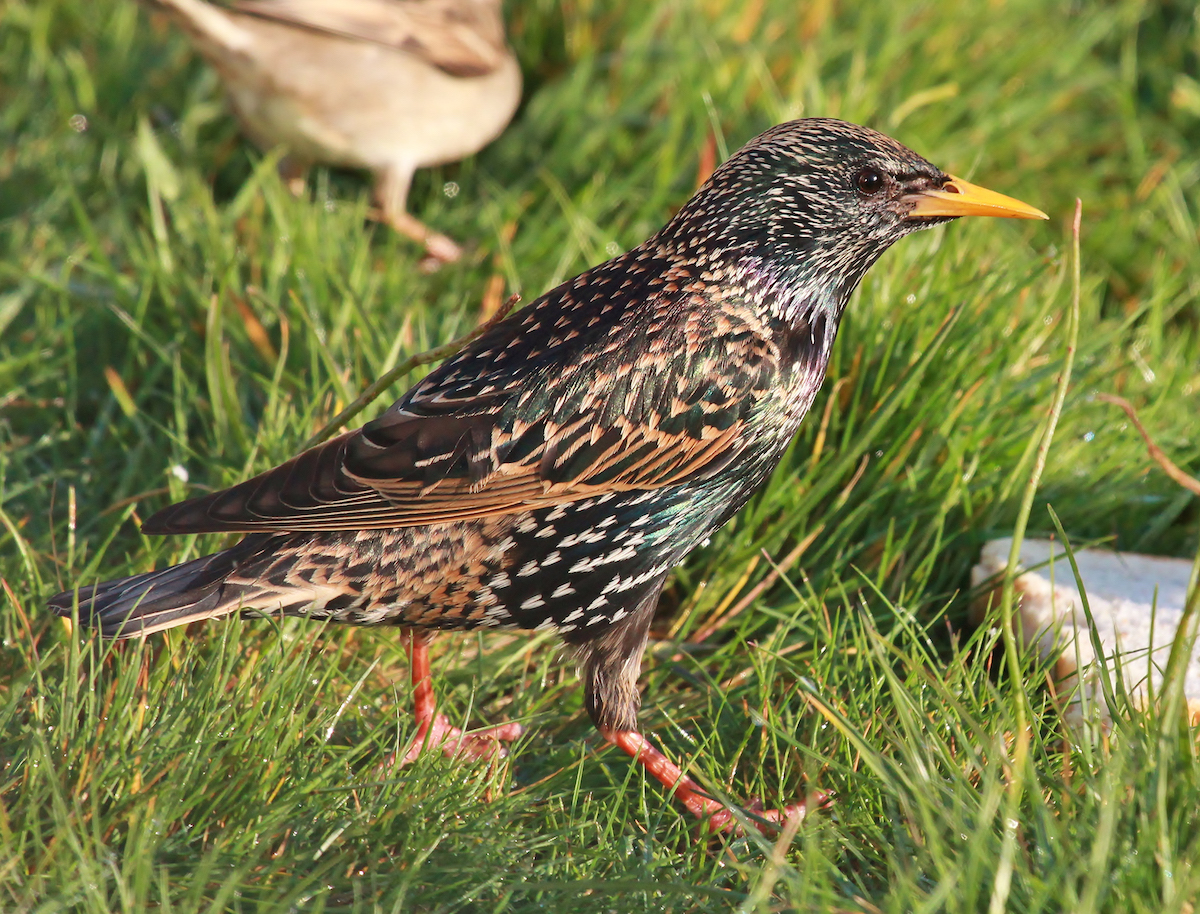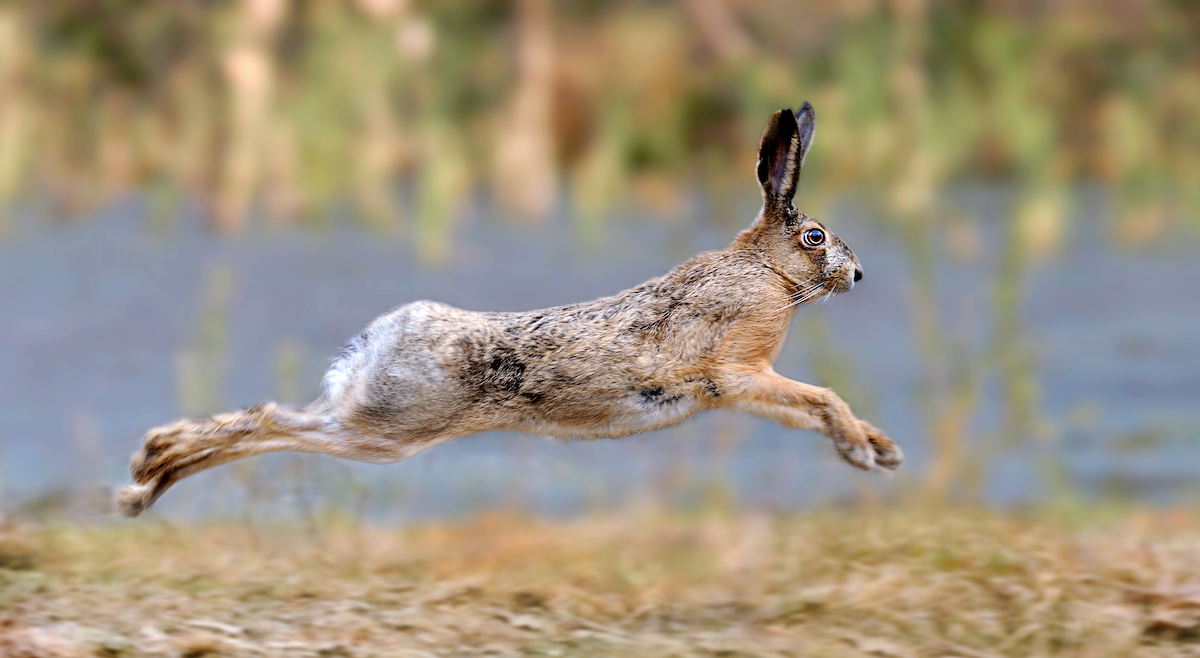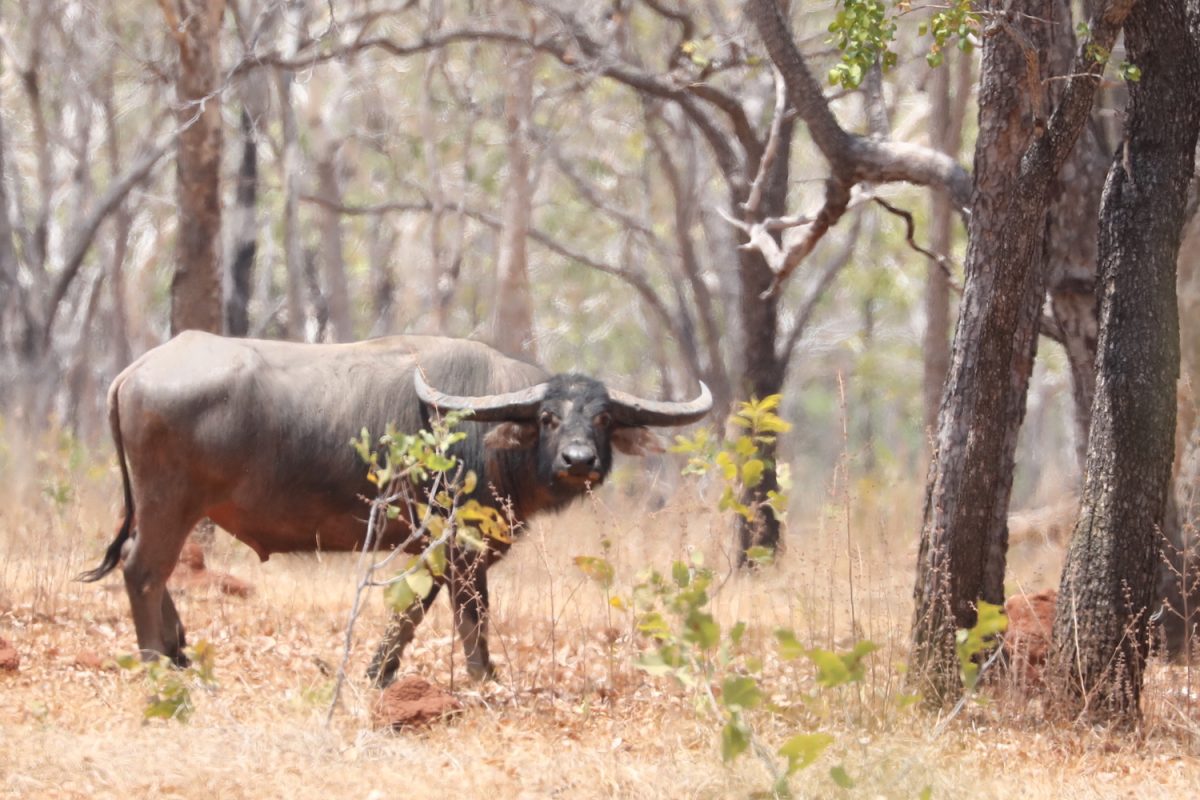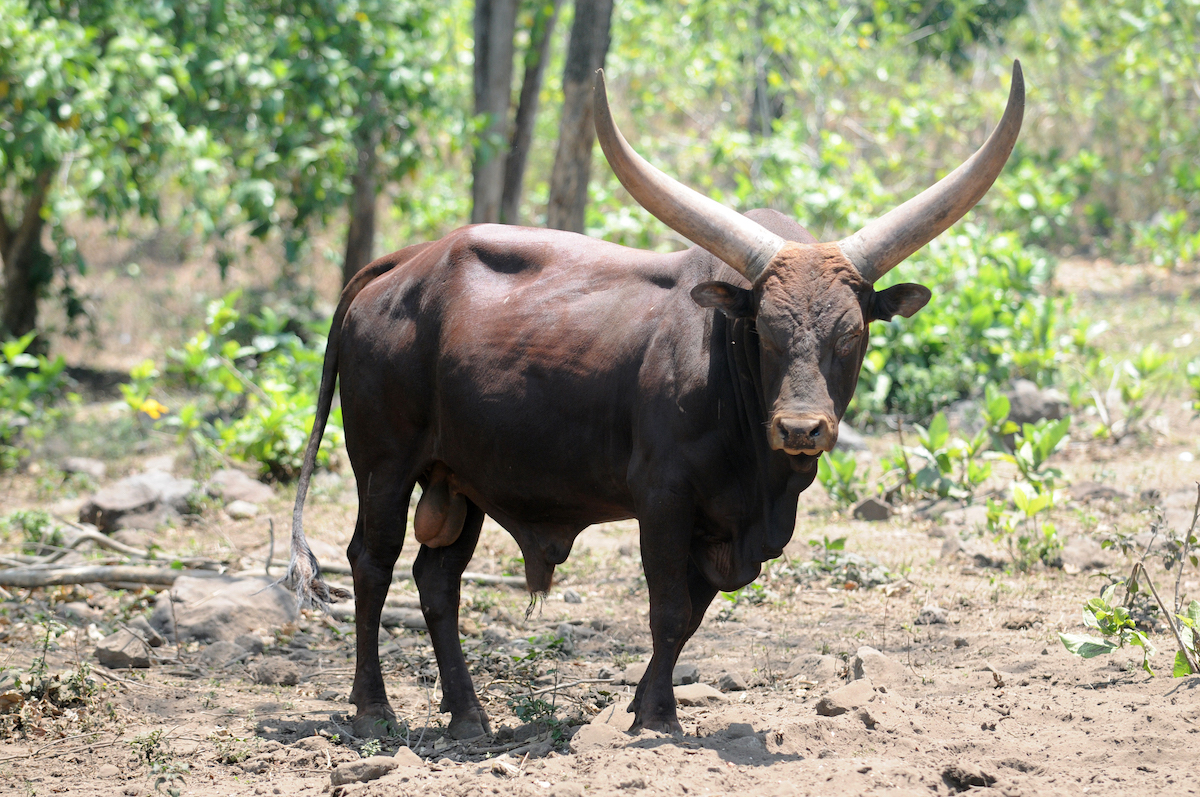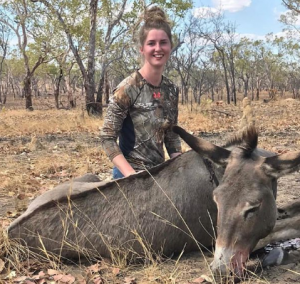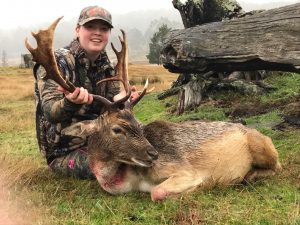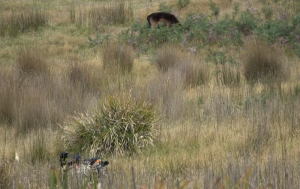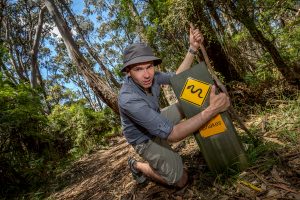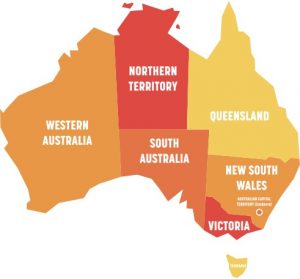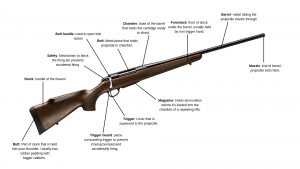As a new hunter, navigating the complex rules of hunting can be quite a challenge, especially when it comes to figuring out what species can be legally hunted. In Australia, this is compounded by the fact that every state and territory seems to have different rules and regulations surrounding wildlife classifications. One state’s feral pest is another state’s partly protected game species. Add native wildlife to the mix and things get even more complicated. In this article, we provide some information on the different game species of Australia, as well as where, how and when they can be hunted.
As always, this information is general only. It is always important that you check with the relevant hunting authority in your state or territory to confirm the rules and regulations around legal game species.
A rose by any other name…
When it comes to hunting, species classification plays an enormous part in how things are managed. Is the animal native or introduced? Is it a game species or a pest species? Is it protected, partly protected or completely open?
In many other countries, game species are often native to that country or region, and as such, may be partially protected under their wildlife laws.
Popular deer species like red deer and fallow originated in Europe, and are still protected in many European countries. Almost all of Africa’s big game species are native to the continent, which is why regulated hunting plays such a big role in the conservation of these species. In the US, the two most commonly hunted animals are whitetail deer and wild turkeys. Both are native to North America and regulated as a natural resource under the Department of Natural Resources. To legally hunt these species, hunters are often required to purchase game licenses and permits, which is invested back into conservation efforts for these same animals. In fact, the money generated from license fees, permits, as well as the taxes on firearms and ammunition provides around 60 percent of funding for the state wildlife agencies that manage wildlife in the US.
But in Australia, the hunting landscape is vastly different. Here, the most commonly hunted game species are not native but introduced. Some were introduced by European settlers for hunting while others were domesticated species that have since gone wild.
As a general rule of thumb, introduced species can be classified as feral, invasive or game species. How they are classified depends on many varying conditions including the state or territory you are in, how deeply ingrained those species have become in the landscape, how much damage they are perceived to do to the native flora and fauna, population densities, government control measures, and even how hunting is viewed locally and politically.
Unfortunately, species classifications are often wrongly applied or used interchangeably. Take the word feral for example. It is a classification that is increasingly being applied to deer species in Australia even amongst hunters.
But deer are not actually feral. Introduced, yes. Invasive, maybe. Pests, sure. But feral? No.
That’s because the word feral is meant to describe an animal or plant that lives in the wild but which is descended from a domesticated species.
That’s why cats and donkeys are classed as feral, while deer and foxes are generally classified as game, pests, introduced or even invasive species. They should never be classified as feral.
The other major classification of animals in Australia is native. While most native animals are protected in Australia, and cannot be hunted without permits, there are some states that do allow hunting of native species with a game license.
See how things can get so confusing?
Common game species by state
When it comes to listing out game species in Australia, it is probably easier to do it state by state, as the rules can differ greatly in each.
For example, red fox are widely distributed throughout mainland Australia but non-existent in Tasmania (despite an expensive government taskforce that spent years and millions of dollars searching for them).
Similarly, wallabies are protected in almost every state of Australia with the exception of Tasmania, where they can be legally hunted by anyone with the appropriate game license.
And almost every state has a different view of deer, with some partly protecting them as game species, and others declaring them pests that can be hunted at any time.
To keep things reasonably simple, we will also only cover the common game species that recreational hunters pursue in Australia. If we were to attempt to cover every species that is shot or killed under pest control or population control permits, this could become quite a long list, as even protected animals can be shot with the right permissions.
Please remember – this is general advice only. For the most up-to-date information regarding what species you can hunt, please check with the relevant state hunting authority. We will provide details of them at the bottom of this article.
Game species of Tasmania
In Tasmania, you can hunt invasive pest species at any time of the year with a valid firearms license.
According to the Department of Primary Industries, Water and Environment (DPIPWE), invasive species include rabbits, hares, feral cats, feral goats, feral pigs, Indian myna birds, rainbow lorikeets, and kookaburras – yes, in Tasmania, these are introduced and considered a pest!
DPIPWE classifies fallow deer, wild duck, brown quail, pheasant, muttonbirds and wallabies as game species, meaning they are partly protected and can only be hunted with the appropriate licenses during the gazetted hunting seasons. Additionally, to hunt wild ducks in Tasmania, you must have successfully completed the Waterfowl Identification Test.
Recreational hunters are also encouraged to shoot common brushtail possums to keep their numbers down.
To hunt outside the gazetted seasons, or to hunt other species including Eastern Grey kangaroos (Foresters) requires a crop protection or game management permit.
Game species of Victoria
In Victoria, there are no restrictions on hunting pest or feral animals including fox, rabbits, hares, feral dogs, feral cats, feral goats, and feral pigs. These can be hunted all year round in state forests, or on private land as long as you have permission from the land owner. Victoria are also one of the only states to offer a fox and wild dog bounty, which financially incentivises hunters to help manage numbers.
There are four species of deer in Victoria that can be hunted – hog deer, red deer, sambar deer and fallow deer. You will require a game license to do so, and will need to adhere to any applicable seasons and/or bag limits.
Despite all the recent controversy surrounding duck hunting in Victoria, it is still legal to hunt both introduced and native game birds with the appropriate game license. However, for native ducks, there are strict seasons and bag limits that apply, and you will need to have passed the Waterfowl Identification Test first. Hunting for quail, pheasants, and partridges generally takes place on private reserves.
For more information on what species can be hunted in Victoria, check out the Game Management Authority website.
In Victoria, it is illegal to hunt any native animals without a permit or cull tag.
Game species of New South Wales
New South Wales (NSW) has many game and pest species that can be hunted in the state, though they also have some of the most complex hunting regulations of any state.
For starters, they have different license types depending on the type of hunting you want to undertake.
A hunter holding a general license (ie a standard firearm’s license) can hunt non-indigenous game and pest animals on private land with permission from the landholder but cannot hunt on public land and cannot guide.
A hunter holding a standard restricted license allows you to hunt non-indigenous game and pest animals on public or private land but does not allow you to guide.
A general guide license allows you to hunt and guide on private land but not public land, whereas a restricted guiding license allows you to hunt and guide on both private and public land.
None of the above allows you to sell the harvested animals. For that, you require a restricted commercial license, which allows you to hunt both private and public land AND sell the animals you harvest. But just to keep things complicated, it does not allow you to guide.
There does not appear to be a license type that allows you to do all of the above!
So what species can be hunted in NSW?
Game and pest species are broken down into three different categories: non-indigenous game birds (Part 1), native game birds (Part 1A), and feral and pest animals (Part 2). Technically speaking, you could even add a fourth category for deer, as they can be freely hunted on private land, but are still considered a game animal on public land (just to keep up with that complexity we mentioned earlier).
Part 1 – game birds
Part 1 of the Game and Feral Species Act covers the various non-indigenous game birds that can be legally hunted in NSW. These include Bobwhite quail, California quail, guinea fowl, partridge, peafowl, pheasant, spotted dove, and turkey.
Part 1A covers the native game birds that can be hunted by hunters endorsed under the Native Game Bird Management Program, which basically allows the management of native ducks and birds on private agricultural land. These birds include mountain duck (or Australian Shelduck), Australian wood duck, Pacific black duck, blue-winged shoveler, chestnut teal, plumed whistling duck, grey teal, hardhead duck, pink eared duck, water whistling duck, brown quail, stubble quail, common bronzewing pigeons and crested pigeons.
Part 2 – feral or pest animals
Part 2 of the Game and Feral Species Act covers introduced mammals that can be legally hunted in NSW. These include feral cats, feral dogs, feral goats, fox, hares, rabbits, common starlings, common or Indian mynas, feral pigeons, and pigs. It also covers seven species of deer – fallow deer, red deer, rusa deer, sambar deer, chital or axis deer, hog deer and wapiti – but remember, these are viewed differently on private land than they are on public land.
In addition to the standard game and pest species, NSW hunters can also take kangaroos on private land as part of the volunteer non-commercial kangaroo shooting program.
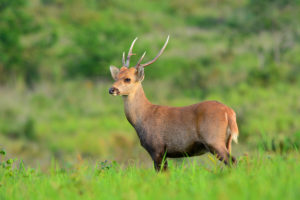
Hog deer
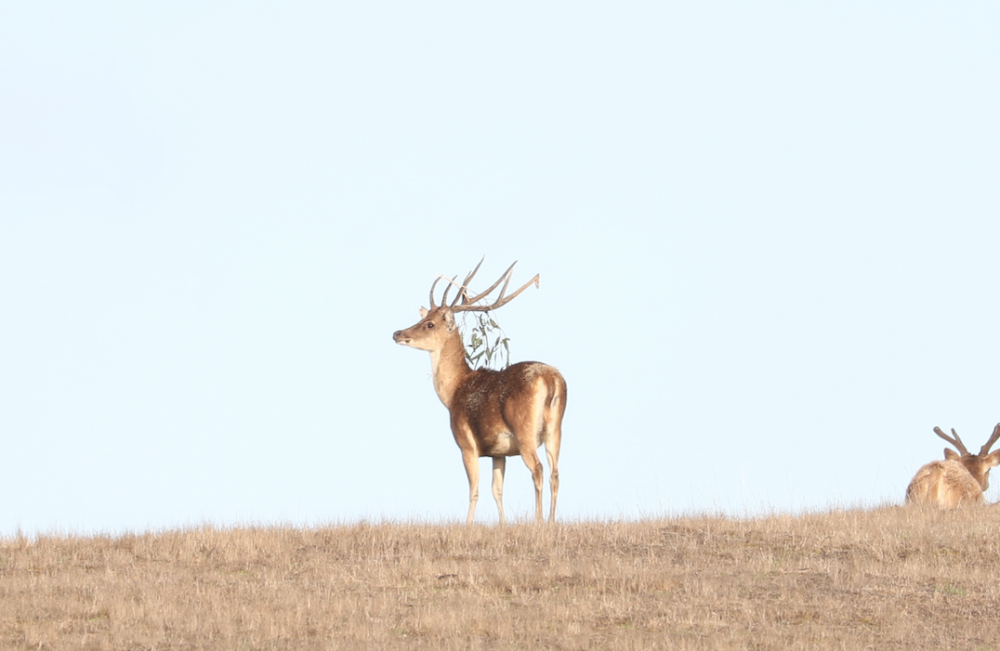
Rusa deer
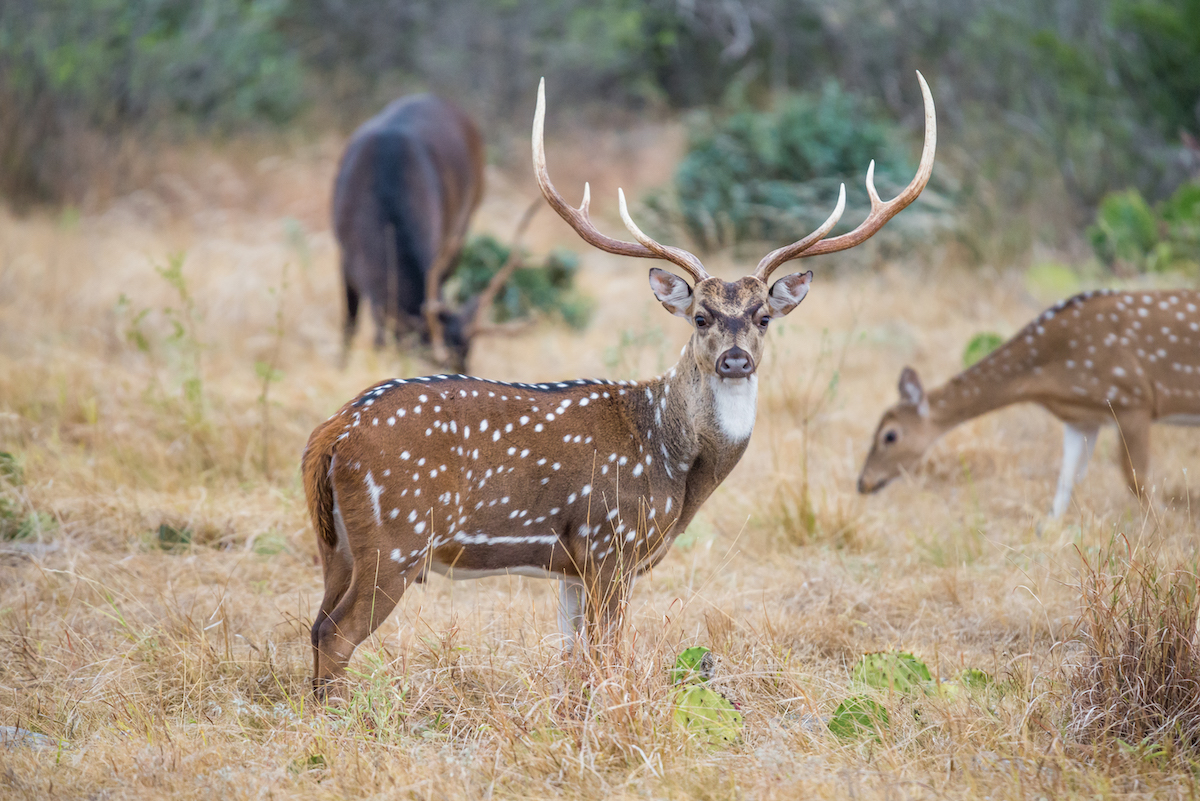
Chital deer
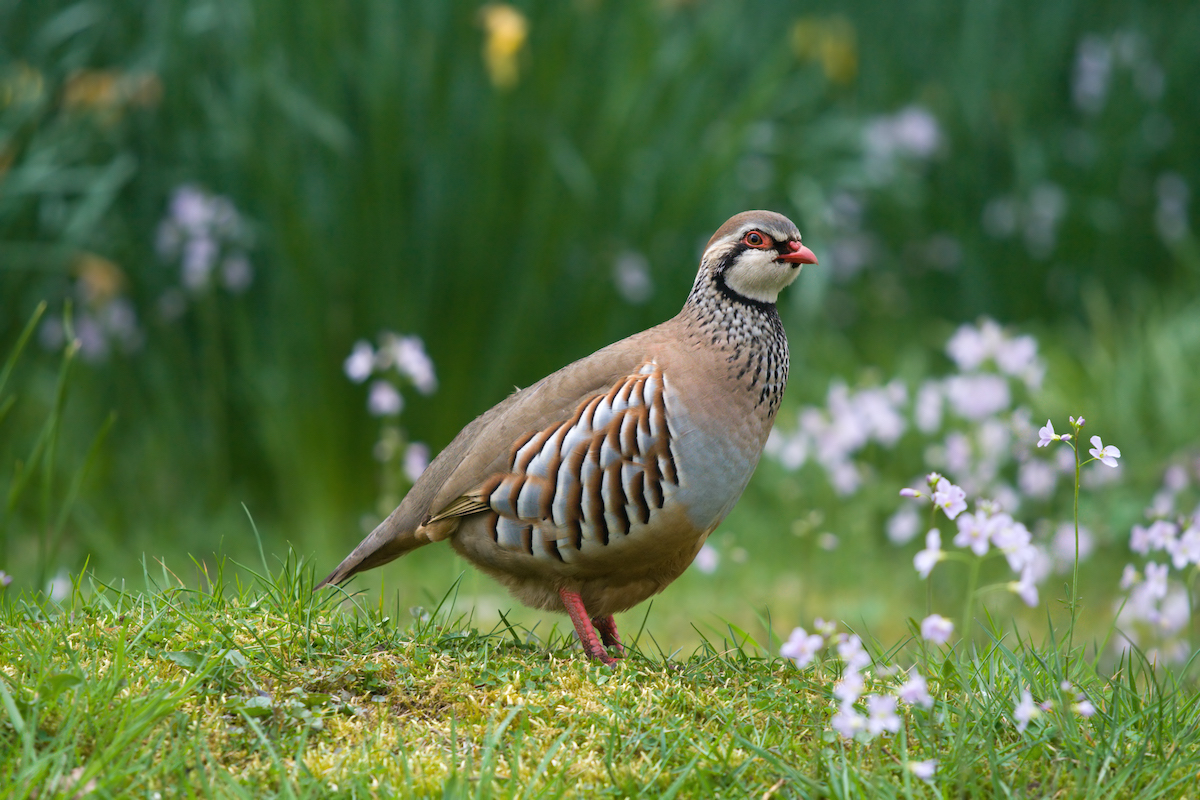
Partridge
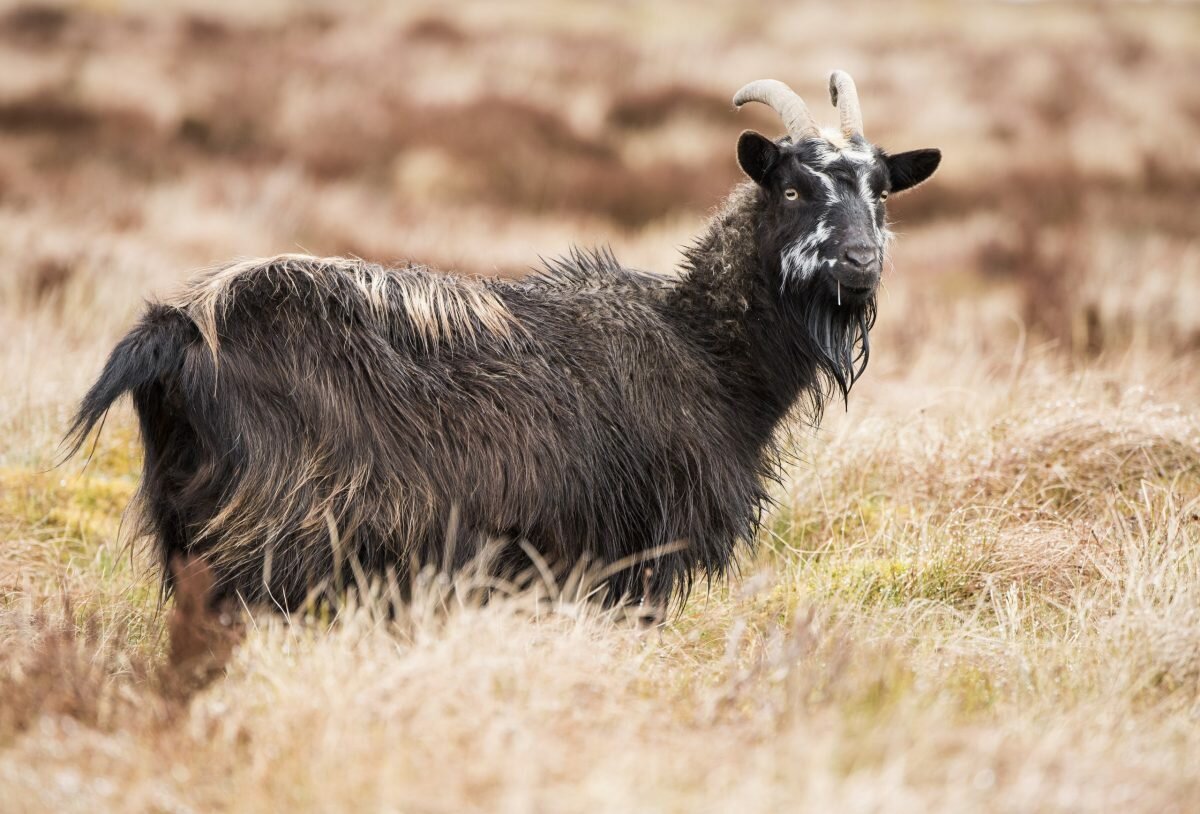
Feral goat
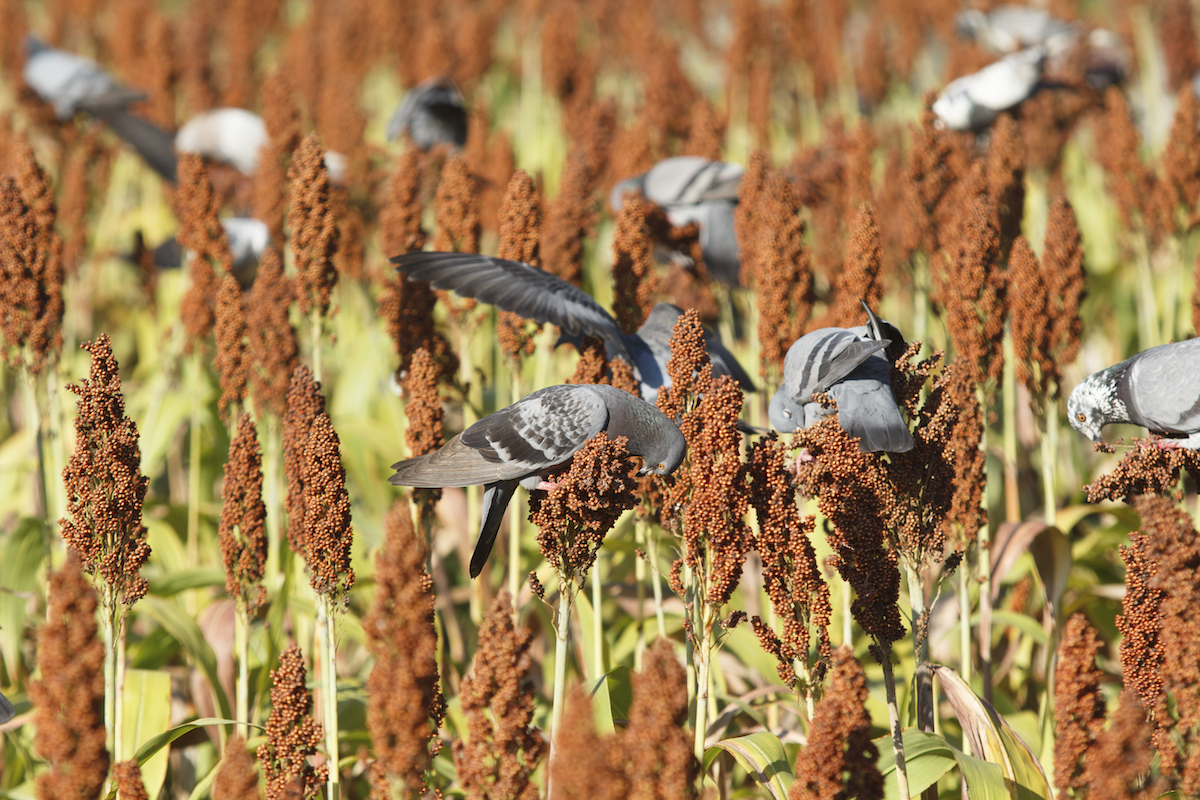
Common pigeons
Game species of Queensland
When it comes to managing wildlife, there is perhaps no state that is more contradictory in its management policies than Queensland.
For starters, the State government readily admits that it has a massive problem with introduced species. As such, they flat out refuse to even give any introduced species a game classification and have, instead demoted them all to pest or feral status. But rather than allow recreational hunters to be part of the solution, the Queensland government has instead locked hunters out of all public lands, allowing them only to operate on private property.
This is great news for hunters who have access to private land as there are literally no seasons or bag limits on any introduced species. But gaining access to private land is not always an easy task.
On the flip side, all native animals are protected in Queensland and cannot be taken without a permit. Landowners can apply for a Damage Mitigation Permit to shoot native wildlife and recreational hunters can apply for a harvest permit but be prepared to jump through some hoops to get them.
If you are one of the lucky ones who can find private land to hunt on, then there is a wide plethora of animals that you can hunt including red deer, chital deer, fallow deer, rusa deer, feral dogs, feral cats, rabbits, hares, foxes, goats, pigs, donkeys, wild horses, feral cattle, camels, buffalo and introduced bird species.
Game species of South Australia
Like Queensland, South Australia restricts the vast majority of hunting to private land. They also classify almost every introduced animal as feral, regardless of whether it was formerly domesticated or not. This includes deer, rabbit, hare, cat, fox, wild dogs, goats, pigs, donkeys, camels, starling, domestic pigeon, European blackbird and the spotted turtle-dove.
There are six species of deer found in South Australia – fallow, red, chital, sambar, rusa and hog deer – though the two most commonly seen in the wild are fallow and red.
To hunt feral animals, all you require is a standard firearm’s license and permission from the landowner. Once you have these, there are no seasons and no bag limits.
In addition, you can also hunt 11 unprotected native species including dingo, budgerigar, galah, little corella, zebra finch, grey- backed silver eye, red wattlebird, Australian raven, little crow, little raven and Torrensian crow.
The only species that qualify as game species in South Australia and which can be hunted on public game reserves are ducks and quail. There are strict seasons and bag limits that apply to game bird hunting, and you will also need to complete the Waterfowl Identification Test. Outside of these seasons, all ducks are protected and cannot be taken.
In addition to the stubble quail, there are eight species of ducks that can be hunted – hardhead, Pacific black duck, chestnut teal, Australian shelduck (mountain duck), Australasian blue-winged shoveler, grey teal, pink-eared duck and maned Australian wood duck. Notice how some of these species are actually protected in other states.
All other native wildlife, including kangaroos and wallabies, are protected in South Australia and cannot be hunted without applying for a Permit to Destroy Wildlife.
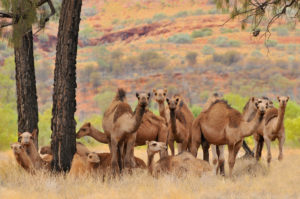
Feral camel
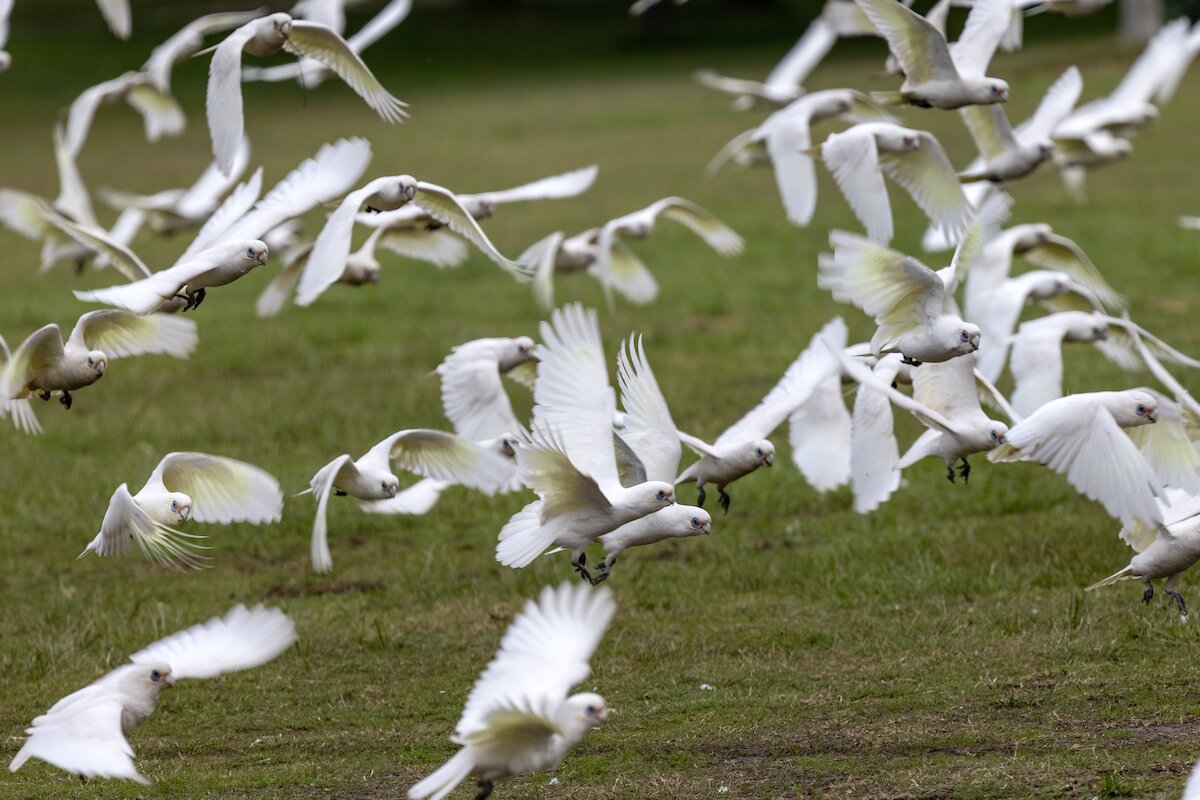
Corellas
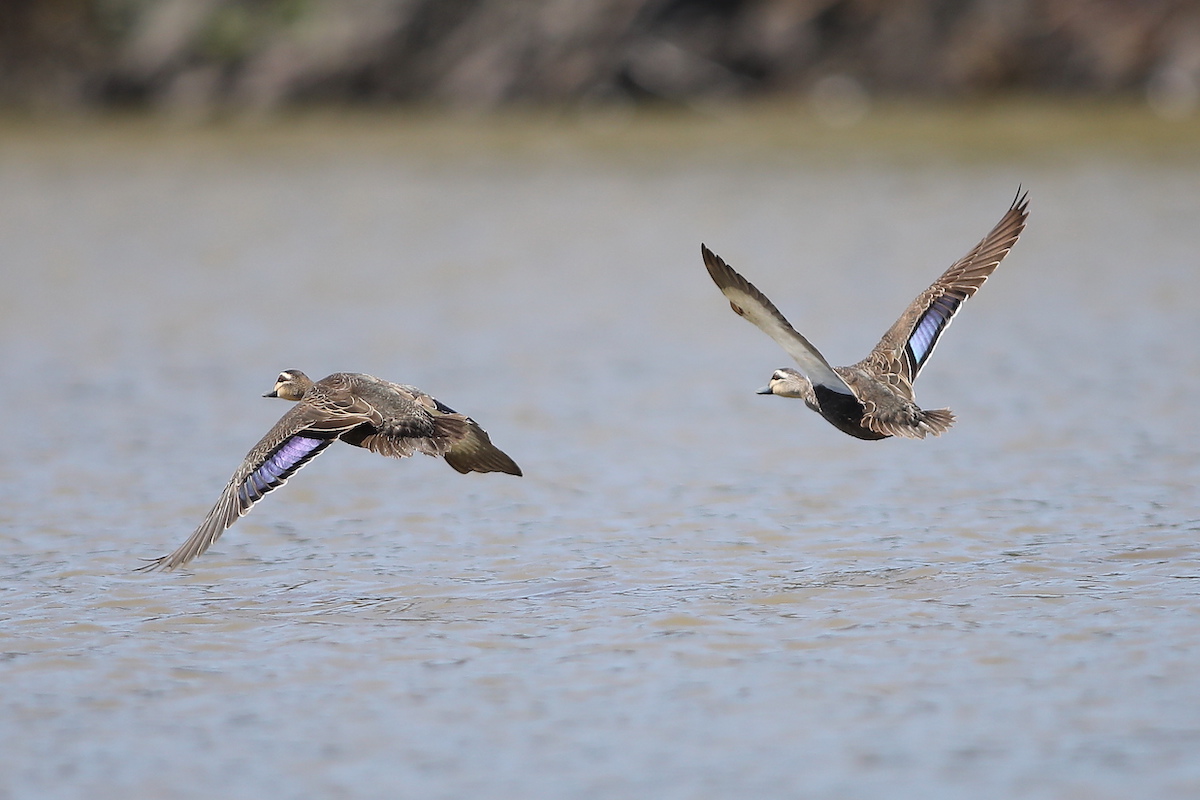
Wild ducks
Game species of Western Australia
Just like South Australia and Queensland, you can only hunt on private land in Western Australia, and only for feral and pest species.
But unlike the other two states, Western Australia does have a system that utilises recreational hunters to manage wildlife on public land.
How it works: if they government determine that wildlife needs to be culled or managed on public land, they contact an eligible hunting or shooting club to assist. The club then chooses amongst their members who will be able to take part in the hunt.
So if you are a recreational hunter in WA, it probably pays to be a member of a registered hunting or shooting club if you want to increase you opportunities to hunt.
Feral and pest species in Western Australia include camels, donkeys, feral cattle, wood ducks, feral dogs, feral horses, hares and starlings.
Deer are classified as vermin by the Western Australian government, and as such, are shot on sight by Agriculture Protection Board officers. If there are small herds that exist in the wild, very few people will talk about where they are for fear they will be eradicated.
Game species of Northern Territory
In the Northern Territory, there is a wide array of feral and introduced species you can freely hunt on private land. All you require is a current firearm’s license and permission of the landowner.
Large populations of feral animals have taken up residence in the Northern Territory. For instance, the state has almost 5 million feral donkeys! They also have one of the best populations of water buffalo, banteng and scrub bull, which is great if you’re after some big game hunting.
Other feral and introduced species include sambar, rusa and chital deer, Barbary dove, camel, horse, pigs, goats, cats, wild dogs, fox, pigeon, rabbits, sparrows, pigeons, and spotted turtle dove.
Most of the species listed above do not require a permit, with the exception of pigs. There are two dedicated reserves where pigs can be hunted: Shoal Bay and Harrison Dam. But to hunt pigs here, you do require a permit.
You also require a permit to hunt any waterfowl in Northern Territory, regardless of whether you are hunting on private or public land, and you can only hunt waterfowl during the declared seasons. Waterfowl include magpie geese, Pacific black duck, wandering whistling duck, plumed whistling duck, grey teal, pink-eared duck, hardhead duck, and maned duck.
Game species of Australian Capital Territory
The Australian Capital Territory is not only Australia’s smallest state, it is also completely landlocked by its bigger neighbour – NSW.
As such, much of the wildlife would be almost identical. Hunting can only occur on private land, and only requires a current firearm’s license. However, the close proximity to NSW means you should be able to hunt across the border as well.
State Hunting Authorities
In Australia, each state and territory manages its own hunting laws. This is why the rules and regulations vary so greatly across the country.
Below is a link to the relevant hunting authority for each state:
Tasmania – The Department of Primary Industries, Parks, Water and Environment (DPIPWE)
Victoria – Game Management Authority (GMA)
NSW – Department of Primary Industries (DPI)
QLD – Queensland Government
SA – Department for Environment and Water
WA – Parks and Wildlife Service
NT – Northern Territory Government
ACT – Australian Federal Police (AFP)
What is I Am Hunter?
I Am Hunter wants to change the way hunting is perceived and to change the conversation from a negative one driven by anti-hunters to a positive one led by hunters.
Our goal is to help hunters become positive role models and ambassadors for hunting, while simultaneously helping non-hunters understand why hunting is important.
You can become a supporter and help us achieve our goal and spread a positive message about hunting with the wider community.
Related content
Our other channels
Get our newsletter
Get our free monthly newsletter direct to your inbox
Listen on iTunes
Listen to our podcast on iTunes.
TV series
Watch I Am Hunter episodes on My Outdoor TV (MOTV)

